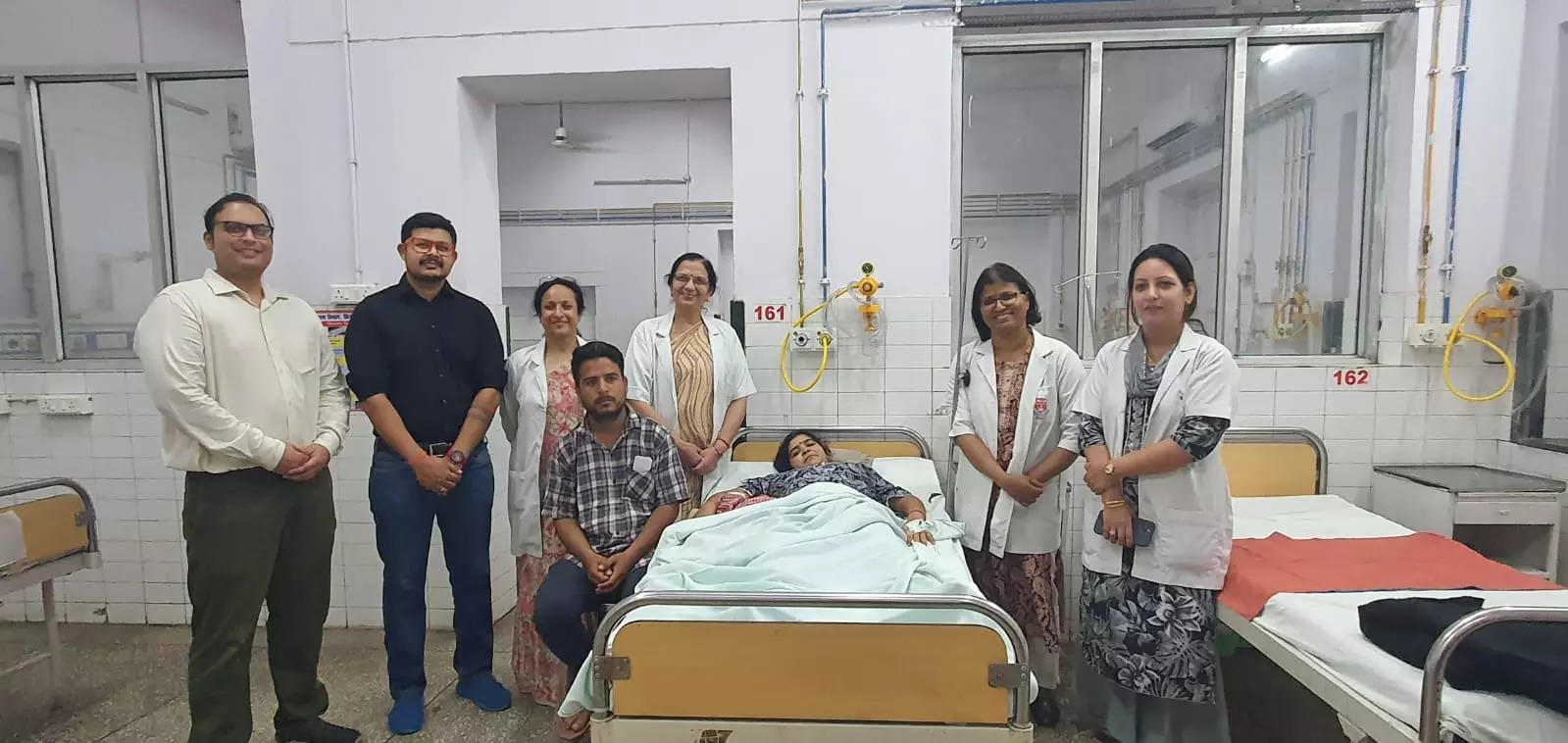Eisenmenger syndrome (ES) is a rare ailment affecting a small portion of the population, (occurs to three persons per 1000 adults and has a mortality rate of 65%) leading to irreversible damage to the pulmonary artery due to a heart defect. The condition’s severity is amplified during pregnancy, where survival rates are low, and the World Health Organization (WHO) advises against pregnancy in such cases.
A 26-year-old woman named Nilima from Gorakhpur came to QMH on Friday during the final trimester of her pregnancy, experiencing breathing difficulties and palpitations. Doctors diagnosed her with a heart condition known as Tetralogy of Fallot, which is a combination of four congenital heart defects. The four defects include a ventricular septal defect (VSD), pulmonary stenosis, a misplaced aorta, and a thickened right ventricular wall (right ventricular hypertrophy). These defects typically result in a lack of oxygen-rich blood reaching the body, which, in this case, caused her heart to function at just 25%. This condition is often associated with cases of ES.
Under the leadership of Prof SP Jaiswar, a team of experts from the Anesthesia and Critical Care Department and the Obstetric Department took immediate action.
Dr Shashank Kanaujia and his team performed a high-stakes anesthesia procedure, employing a specialized technique with guidance from head anesthesia Prof GP Singh and others. The surgical team, led by Prof Anjoo Agrawal and Dr Mona Bajaj, executed a successful cesarean section, ensuring the survival of both mother and child. Subsequent care at the Trauma Ventilatory Unit (TVU) by Dr Zia Arshad, Dr Ravi Prakash, and Dr Rati Prabha, further contributed to their recovery. Finally, the patient and baby were discharged from hospital on Monday.
The Anesthesia and Critical Care Department, under the leadership of Prof GP Singh, has achieved three consecutive patient survivals over the past two years, setting an international benchmark. The specific technique employed in these cases, pioneered by cardiac anesthetist Dr Karan Kaushik and his team, played a pivotal role in the successes. In the technique, Dr Karan explains special arrangements are made to give anesthesia catheters inserted in primary veins of the heart to administer drugs directly into the heart. Besides, high doses of drugs to increase blood pressure during surgery were injected as BP goes down in effect of anesthetics.
Prof GP Singh is poised to release details of this technique, providing hope for transforming the prospects of patients facing this condition. “KGMU’s achievement stands as a testament to medical prowess and dedication, making strides toward rewriting the narrative of ES and offering optimism to those affected,” he said. KGMU vice chancellor Prof Soniya Nityanand congratulated whole team for their success.


